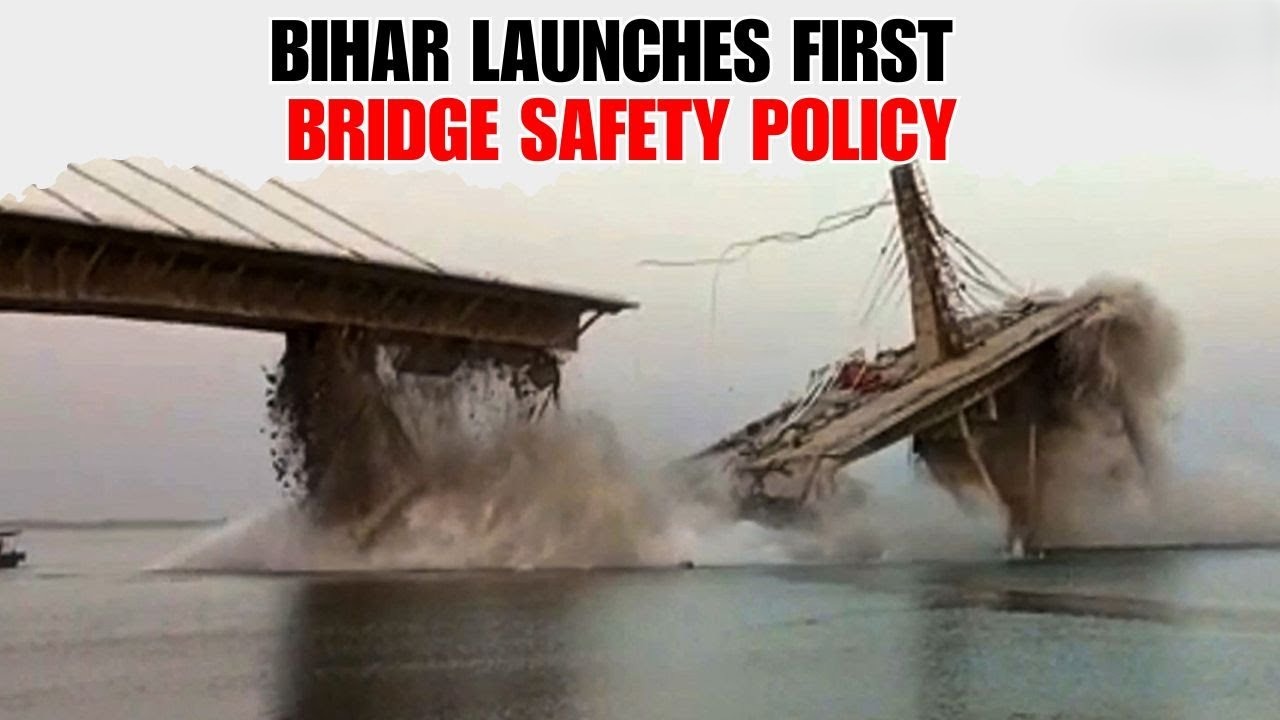
Follow WOWNEWS 24x7 on:

Key Highlights in Today’s News
The Bihar government has launched the Bihar State Bridge Management and Maintenance Policy, 2025, marking the first move by any Indian state to deploy artificial intelligence and machine learning for systematic bridge upkeep. This ambitious initiative directly responds to a series of bridge collapses across the state in recent months.
Key features include drone-based inspections, mandatory digital audits, 3D digital twin mapping, real-time defect detection, and an AI-driven Bridge Health Index for every major structure.
More than 3,968 bridges are covered under this policy, and critical bridges will now face routine digital assessment every 90 days, with data made available to the public via a new online portal.
Why Bihar Is Turning to AI and Drones
Bihar has made global headlines following the collapse of at least 10 bridges in just over two weeks. Causes have ranged from construction flaws and material quality to unscientific river works and heavy monsoon rains. In addition to the tragic human and economic toll, these incidents prompted scrutiny from the Supreme Court and fierce criticism from political opposition, all demanding better infrastructure oversight.
With nearly 4,000 bridges crisscrossing riverine landscapes and flood-prone zones, officials recognized the urgent need for technology-driven vigilance. The government moved swiftly, approving the statewide policy on June 6, 2025.
How the AI-Powered System Works
Drones equipped with 4K, thermal, and LiDAR sensors will fly routine inspection missions over bridges, capturing comprehensive, high-resolution data on cracks, corrosion, water damage, and even sub-millimeter flaws.
Artificial intelligence algorithms analyze this data, flagging everything from minor surface fissures to deep-seated structural concerns with an accuracy rate above 98 percent.
Inspection reports automatically feed into the new Bridge Health Index, where each bridge receives a public star rating and ongoing digital health log.
Critical bridges (those with low health scores or spanning vital arteries) are now scanned at least every three months. Those scoring below a threshold of 20 on the index will be closed promptly for repairs.
During flood events, rapid drone scans offer instant stability assessments under the policy's “Exceptional Event Works” protocol.
Engineers undergo new AI and drone operation training in partnership with IIT Delhi, while private vendors, such as Gurgaon’s Vital Environment India Pvt Ltd, handle advanced inspection technology and compliance standards.
Safety, Transparency, and Digital Accountability
The Bridge Information Management System (BIMS) will make all inspection results, health cards, and status updates available online to citizens, a measure aimed to boost transparency and rebuild public trust. The standards prescribe preservation of inspection records, quick documentation of repairs, and strong penalties for falsification or negligence.
Routine tasks—such as visual inspections and recordkeeping—are still maintained, but AI and sensor data now take the lead in early detection and repair prioritization.
Impacts and Future Roadmap
This high-tech overhaul seeks to make Bihar’s bridges safer, extend design lifespans, and preserve the investment in one of India’s largest and most flood-vulnerable transport networks.
Training, implementation, and digital reporting are phased first for high-risk bridges and will expand to the state’s full inventory by 2026. IIT Patna and IIT Delhi are also tasked with periodic, independent safety audits.
Engineers at every level—junior, assistant, senior, and executive—now carry clearly defined duties for bridge inspection and rapid updates.
The move is poised to transform public safety standards, making Bihar a national reference for “smart infrastructure” and digital risk management in India’s public works sector.
Today’s announcement reflects a broader shift in which AI, drones, and data analytics become essential tools in safeguarding citizen welfare and ensuring that the tragedies of recent weeks are not repeated.
Source: Economic Times Infra (August 6, 2025)




